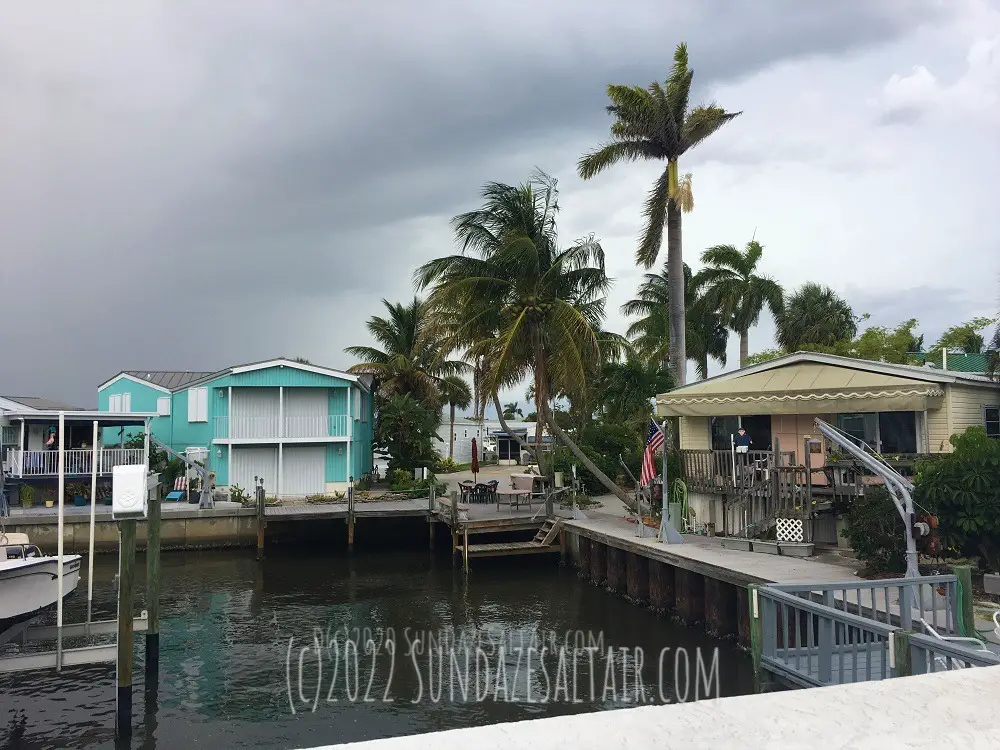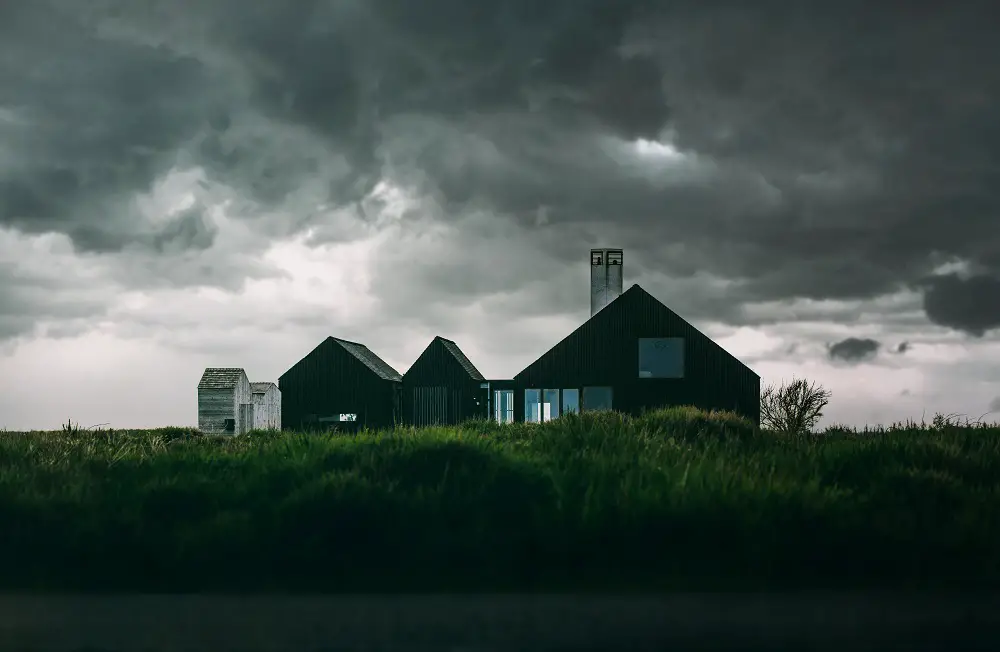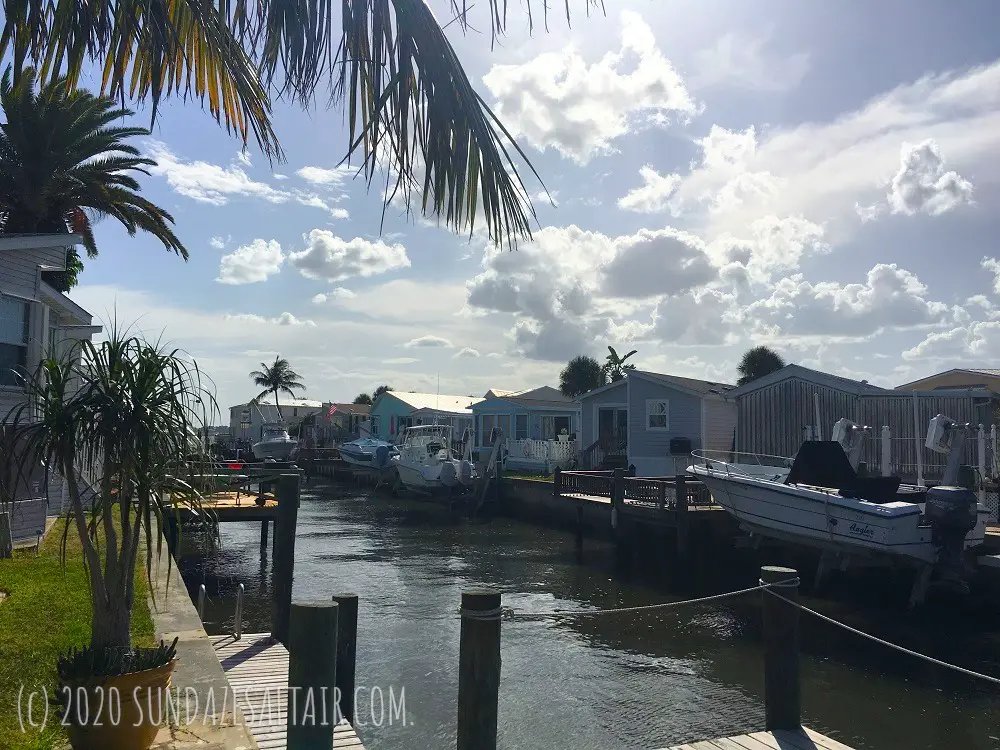
How to Save Money on Your Homeowners Insurance in Florida & Beyond: How to Lower Your Homeowners Premiums & How I Saved Over $1,000
Seven Smart Tips (Plus a Bonus!) to Lower Your Homeowners Insurance Premiums Plus Why Florida’s Homeowners Insurance Rates Have Skyrocketed
If you are one of many homeowners who felt a near-electric shock when opening your most recent insurance renewal, you are not alone. Insurance rates are skyrocketing, especially in states like Florida where premiums are rising at double and even triple rates. And no, “triple” is not a typo now that exorbitant insurance rate hikes have become the “new normal.” Adding fuel to this fire, many homeowners are finding themselves suddenly uninsured after being dropped by their insurer — often without ever having filed a single claim. Even if you are one of the lucky ones who has not yet been “ghosted” by your carrier, your latest policy renewal might be contingent on replacing your perfectly fine roof within 60 days…. or else get terminated. It’s a vicious cycle that forces homeowners to start the desperate hunt for affordable homeowners insurance all over again.
Well, keep reading to learn Seven Smart Tips to Reduce Your Homeowners Insurance Costs (Plus a Bonus Tip!), including small changes to your policy that can save you hundreds, and even thousands of dollars. Plus, learn secrets from insurance industry professionals on how to manage or reduce your risk, as well as how to potentially avoid replacing your roof as a condition to qualifying for insurance…
Update: As of July 15th, 2022, 78,000 more homeowners will lose their homeowners insurance coverage as yet another major insurance company, Tampa-based Southern Fidelity, was ordered liquidated. This makes the 4th Florida insurance provider to fail this year. It is also the first insurance company to fail since Florida lawmakers met in a special session to tackle the state’s out-of-control property insurance market.
How Bad Is the Homeowners Insurance Situation for the Average Homeowner?
To say the situation is out-of-control is an understatement. Homeowners insurance premiums are up nearly 25% this year alone. It is fast reaching crisis levels for many families who have few options to afford skyrocketing insurance rates on top of their mortgages on incomes that are stagnant at best. According to Florida State Senator Jeff Brandes, many homeowners are nearly paying more for their homeowners insurance premiums than they are for their mortgage payments. Speak to a cross-section of homeowners and it quickly becomes apparent that the rapidly rising costs of insuring one’s home is now one of the biggest sources of stress on both the mind and the wallet…
Lowering the Acceptable Roof Age to Qualify for Homeowners Insurance: Another Financial Burden on Homeowners
One example of the insanity gripping the industry can be seen in some of the new, more extreme criteria homeowners now must meet just to qualify for insurance. A few years ago, someone I know got a new roof that came with a “lifetime warranty,” defined as “50 years” by both the roofing company and the roofing industry. Despite this, the roof is now considered “uninsurable” by a major insurance company at the ripe old age of 15 years old. Yes, you read that right. A 15-year-old roof may now be a major obstacle to getting, and keeping, insurance coverage for your home. When the homeowner contacted the state about the matter, he was told that insurance companies are permitted to lower the insurable roof age as underwriting criteria for their policies.
As a result, both the state and insurance companies are essentially providing a disincentive for anyone to obtain long-lasting, high-quality roofs. The state and insurers are instead incentivizing homeowners to obtain the lowest quality, least long-lasting roofs since they must be replaced every 10 to 15 years anyway to keep insurance coverage. Of course, these “inexpensive,” lesser quality roofs are still outrageously expensive — especially when you consider how often they must be replaced just to qualify for a policy to cover your home.
With the inevitable proliferation of lower quality roofs, who is really benefiting from lowering the insurable roof age other than roofing contractors? Certainly not homeowners who are getting less durable, less long-lasting roofs for their hard-earned money.
**While the first part of this article focuses on the homeowners insurance situation in Florida, scroll down to Seven Smart Tips to Save Money on Your Homeowners Insurance (Plus a Bonus Tip!) to learn secrets to save big $$$ in whatever state you call home…

Navigating the Storm: Make Small Changes to Save Big on Homeowners Insurance
In this article, I offer simple, practical ways homeowners anywhere can save big amid the rising tidal wave of insurance costs. These money-saving tips were gathered from insurance professionals in my quest to lower my own homeowners insurance premiums. Before I discuss specific steps you can take to significantly lower your insurance premiums, I briefly examine possible causes of recent dramatic insurance rate hikes in the state of Florida…
**If you prefer to skip straight to the cost-saving tips, scroll down to, “Seven Smart Tips to Save Money on Your Homeowners Insurance (Plus a Bonus Tip!)…”
Why Is My Homeowners Insurance So High? Why Are Homeowners Insurance Rates Skyrocketing in Florida?
While the answers vary depending on who you ask, there are a few factors that may be responsible for a homeowners insurance market that is increasingly and shockingly out-of-reach for the average homeowner.
As Florida lawmakers struggle to address how Florida’s property insurance market got into dire straits in the first place, we start with one indisputable and alarming fact. The average Florida homeowners insurance cost in 2021 was $3,600. Compare that to the average US homeowners policy cost of $1,398, and it is clear that Florida has some of the highest insurance premiums in the nation. And this year alone, homeowners premiums are up nearly a whopping 25%, and that appears to be a more conservative estimate. Why the sudden mega-spike in insurance rates in the Sunshine State…?
Why Did My Homeowners Insurance Go Up? Three Possible Reasons
With inflation and the costs of all goods and services rapidly increasing, it is little surprise that rising replacement costs are now affecting your home and home insurance premiums. However, even before the costs of everything soared into the stratosphere during the first six months of 2022, insurance rates had already begun surging. Let’s consider three frequently cited reasons why…
Reason #1: Fraud & Litigation
According to representatives of the Florida insurance industry, one major contributing factor to rising rates are the high costs of litigation incurred defending against roofing fraud. Apparently, so many unscrupulous contractors have exploited the industry with so many frivolous claims that litigation costs have, well, gone through the roof.
Insurers insist that the high premiums homeowners are now paying are simply the result of insurance companies passing the soaring costs of defending these lawsuits onto consumers. This apparent surge in fraudulent roofing claims is also one of the cited justifications for the now common insurance contingency to replace your entire roof if you want any chance of getting– or keeping– insurance coverage for your home. This, along with making a 10-year-old roof an “unacceptably old” roof, now known as “exposure management” to insurance companies, are among the frequently cited reasons for forcing homeowners to immediately replace otherwise healthy roofs or else risk losing insurance coverage.
**Keep reading to learn one unique option you may have if told your roof is “too old” to qualify for homeowners insurance…
On the Other Hand…
Roofing claim fraud is certainly a problem. Insurance regulators and consumer advocates, on the other hand, say there is more to the story than that Florida is simply the unofficial roofing fraud capitol of the country. Roofing claim abuse is not unique to Florida and surely there are opportunists in other states. Are there perhaps certain regulatory loopholes in the state that have made it easier for unethical individuals to price-gouge insurers and, ultimately consumers?
Reason #2: The High Cost of Florida Storms
Of course, much has also been said about Florida hurricanes as a major contributor to the state’s now sky-high homeowners insurance costs. While there have been notable and very costly storms, such as Hurricane Irma in 2016 and Hurricane Michael in 2018, many recent storms have made landfall elsewhere and also caused considerable damage in other states.
On the Other Hand…
No doubt the high cost of storm damage claims is a contributing factor, but claims are likely up in every state where extreme weather occurs. Many other states have had to contend with recent disasters, including massive devastating wildfires out West and miles-long swaths of tornado and hail damage in Central and Southeastern states.
While the impact of recent storms on Florida’s insurance crisis may be debatable, there is one storm whose impact is indisputable. This historic storm triggered industry-altering changes, from building codes to homeowners insurance, when it slammed into the South Florida coast nearly 30 years ago…

Reason #3: The Legacy of Hurricane Andrew
If you could travel back in time to late summer 1992 in South Florida, all eyes were fixed on the eastern horizon on a monster storm barreling across the Atlantic. Few, however, could predict the extent to which this storm would alter the Florida insurance industry.
Clearly, there are a number of complexities beyond the scope of this article, but one of the first dominos to set the current insurance crisis in motion was, without a doubt, the once-in-a-century Hurricane Andrew. Although Hurricane Andrew hit south of Miami, the damage it did to areas like Homestead, Florida was so catastrophic it had an impact that would alter the Florida landscape — both insurance and otherwise — for decades…
Ultimately, insurance companies paid out an estimated staggering $27.3 billion in damages, making Hurricane Andrew the then-undisputed costliest natural disaster in US history.
Hurricane Andrew & A New Insurance Landscape
Following these huge losses, many large insurance carriers began to leave the state. Their departure not only left Florida homeowners with fewer options but also created a void that small insurance carriers soon began to fill. Taking on a now-huge financial risk inevitably led these smaller carriers to rely on reinsurance, or insurance for insurance companies, to assume the heightened risk.
Further, in an apparent effort to convince remaining carriers to not completely abandon Florida policyholders, legislative and regulatory changes started that would apparently increasingly shift the risk burden of future storm losses from insurers onto consumers. Today’s homeowners, now more than ever, seem to be feeling the effects of this legacy. All in all, a “perfect storm” of factors, from less government regulation over the reinsurance industry to uncapped rates that could be raised at any time, have led to where we are now – a market where the advantage increasingly favors insurers over homeowners.
This is manifested in everything from the non-renewal notices countless Florida homeowners are receiving to the increasingly higher risk of loss the homeowner must bear.
Can This Insurance Crisis Create Opportunities for Insurers with More Customizable Homeowners Insurance Options?
Whether due to fraud, extreme weather, industry regulations and market factors, or some combination of all of the above, the fact is that homeowners have a greater financial burden with fewer options. A market where homeowners feel at the mercy of insurers is surely unsustainable and in need of serious reform. Such a market is also ripe for a new kind of insurance company with more flexible and customizable homeowner policy options.
**In the meantime, what can you do as a homeowner to reduce your home insurance costs & risk..?
Seven Smart Tips to Save Money on Your Homeowners Insurance (Plus a Bonus Tip!)
The following tips are a checklist of important factors to consider when shopping for, or renewing, your homeowners insurance. Bookmark and save this page so you know what to look for and what questions to ask. I have also provided links to a variety of sources so you can do more research for maximum peace of mind.
#1 Tip to Save Money on Homeowners Insurance: Raise Your Deductible
It is so simple but it is easily overlooked. Increasing your deductible, even just a small amount, can save you quite a bit of money in premiums. For example, instead of opting for a $500 deductible, try raising your deductible to $1,000, and it may save you as much as 25% on your premiums, according to the Insurance Information Institute. By doing this, you are essentially “self-insuring” and will be responsible for the first $1,000 but your overall savings should more than make up for the unreimbursed amount.
Of course, you will only want to choose the highest deductible you can reasonably afford. If you are comfortable, consider raising your deductible to a manageable amount such as $1,000.
Extra $$ Saving Tip for How to Save Money On Your Homeowners Insurance: Why Pay For A Lower Deductible When You Probably Won’t Even Use It..?
Also, if you are like most people, you probably avoid going through your insurance company for any small claims to prevent your rates from rising. Therefore, if you opt for a low deductible, you are essentially needlessly paying for insurance coverage you will likely never even use.
Bottom-line: Choose a higher deductible to lower your premiums and keep more money in your pocket.

#2 Tip to Save Money on Homeowners Insurance: Don’t Confuse Market Value With Cost to Rebuild
You may have a house that is worth a lot more than you paid for it due to an increase in the real estate market. While this is great for your long-term investment, do not confuse this increase in value, known as fair market value (“FMV”), with how much it will actually cost to rebuild your home, also known as “replacement value” or “actual replacement cost.”
Your homeowners policy should be based on the actual cost to rebuild or replace your house, not its fair market value, which is usually higher and typically includes irrelevant (for insurance purposes) factors such as location. Since FMV is often higher, your insurance premiums will also then be more expensive for the higher coverage.
Short supply and high demand have made market value skyrocket in many regions. Of course, recent supply shortages and inflation have now increased the cost of everything, including building materials, driving up replacement costs as well.
The takeaway here is to ask your insurance agent what your premiums would cost you under each type of coverage. Compare and contrast the numbers, and most likely replacement cost coverage is cheaper. Otherwise, you could wind up paying unnecessarily high premiums by insuring your home to its market value (“FMV”) when you only need coverage for the actual cost to rebuild your home.
Extra $$ Saving Tip: Many Insurers Have a Minimum Threshold But Be Sure Your Agent Calculates Rates Based On Both Types of Coverage for Comparison
Many insurers do now have a limit of just how low you can insure your home for its replacement costs. For instance, many insurers do not permit coverage any lower than, say, 60% of your home’s fair market value. In this surging real estate market, a minimum threshold obviously means that replacement cost coverage will now cost more. However, even with this limitation, you may still be able to realize significant savings by only insuring your home to its replacement cost.
Bottom-line: Have your insurance agent crunch the numbers to lower your premiums and avoid accepting the first number you are quoted.

#3 Tip to Save Money on Homeowners Insurance: Don’t Over-Insure Your Personal Belongings
While you want to protect your valuables, you can have “too much” of a good thing. As we learned, when your insurance policy coverage exceeds the value or the replacement cost of the insured property, you have over-insured. As with home rebuilding costs, don’t just settle with the first number you are quoted for personal property coverage. Ask your agent to crunch the numbers for different levels of coverage and notice the difference it makes in reducing your premiums and total costs. For example, if your personal property realistically totals no more than $50,000, why are you insuring it for $75,000, and paying for coverage you probably don’t need?
Bottom-line, be realistic about the value of your possessions or you may needlessly pay higher premiums for coverage your property does not warrant.
In addition, for personal property, you can generally lower your premiums by choosing actual cash value (“ACV”) coverage (what your TV is worth today after depreciation, for example) versus replacement cost value (“RCV”), which is higher because it aims to replace the exact same TV in today’s market. Replacement cost does provide better coverage, especially for items such as electronics since it includes that recoverable depreciation of your property. As a result, insuring to replacement costs for your personal property will cause you to pay higher premiums for the greater coverage. Therefore, consider the type of personal property you are insuring when deciding the type of coverage you need.
#4 Tip to Save Money on Homeowners Insurance: Maintain & Clean Your Roof
Of course, every homeowner wants a well-maintained roof for the health of your home. Now, however, roofs that may have been considered well-maintained a few years ago may now be considered “in need of replacement” according to your insurer. If you are one of the countless homeowners who received a letter telling you to replace your roof or get dropped, you are probably all too familiar with this new, increasingly common policy. Why are insurers, in the business of assuming risk, suddenly so risk-adverse that 10-year-old roofs may now be considered uninsurable? More importantly, is there anything you can do to avoid replacing your entire roof?
The first and easiest action you can take is…
Maintain Your Roof in Good Condition…. Drones May Be Watching & Can Now Do “Inspections”
If you are shopping around for a new insurance company, you should be aware that insurers have more ways than ever to check out your home without ever setting foot on your property. One of the best ways to do this, particularly for checking the condition of your roof, are drones. Recently, a friend shopping for a new policy discovered this the hard way when he suddenly received a denial letter. Why? It seems there were a few missing roof tiles unbeknownst to him, which the insurance company quickly spotted when they flew a drone overhead. Unaware such a drone “inspection” had even occurred, my friend had no chance to even attempt to “cure” or fix his roof prior to denial.
Bottom-line, when applying for a new policy, be sure your house is in tip-top shape and watch out for drones.
***Extra Tip: Can Insurance Inspectors Show Up at Your Property Unannounced? Not So Fast…. Check Your State’s Laws
Drones notwithstanding, I know of a few instances of insurance inspectors attempting to access a homeowner’s property unannounced. The homeowners were not home at the time and were only aware inspectors showed up because they live in a community with manned security. Since the inspectors had not called ahead, the gate turned them away. Later on, insurance agents informed the homeowners that a homeowner must be given notice prior to any insurance inspection, at least in the state of Florida.
Algae Is Not Just Cosmetic… Avoid This Roof Red, Green or Black Flag
In addition to structural issues like missing tiles, something as simple as visible algae on a roof can be a deal-breaker when applying for property insurance. If you happen to have a roof comprised of shingles, this tip pertains to you. Algae, it turns out, is often an indicator of a far more significant problem than its unsightly green or black appearance. Algae tends to retain a lot of moisture which can cause roof shingles to eventually rot away and disintegrate.
Not surprisingly, the presence of algae raises serious red flags for insurance companies. A friend with a shingled roof recently discovered this first-hand when he was denied coverage due to a few algae-covered shingles.
How Can You Treat Algae on Your Roof?
If you have shingles on your roof, this website has some interesting and useful algae-fighting tips, including zinc strips, to help prevent or kill algae on your roof.
**In addition to preventative roof maintenance, keep reading to discover an alternative to replacing your entire roof, below in Tip #7.

#5 Tip to Save Money on Homeowners Insurance: Maintain Your Home in Good Condition
It goes without saying that you want to keep your home well-maintained. You also should repair any potential hazards to minimize the risk of injury to visitors to your property. Here are a few categories of improvements that can improve the condition of your home while also keeping your insurance costs low:
Keep Your Home in Good Shape Tip #1: Plumbing Maintenance & Prevention
The biggest category of homeowner claims involves water damage. One burst hose can cause thousands of dollars in water damage in seconds. Rubber and plastic hoses are common these days, but they also tend to dry out and break easily. One possible preventative measure is to replace any plastic hosing with braided steel hosing if possible. Doing this can protect your home from water damage and lessen your chances of water loss claims from fragile plastic hose breaks. Avoiding claims, of course, helps you maintain any claims-free discounts on your insurance.
Keep Your Home in Good Shape Tip #2: Look Out For Signs of End of Life-Expectancy
Observe your home and look out for visible signs that anything is reaching its end-of-life expectancy so it can be repaired or, if necessary, replaced. We discussed the importance of maintaining roofs and plumbing above, but also be on the lookout for signs of rust and wear-and-tear in items like furnaces or air conditioning units.
Maintaining important home systems in good condition will not only provide peace of mind but will save more money in insurance costs over time, and help you hold onto claims-free discounts.

#6 Tip to Save Money on Homeowners Insurance: Save Thousands With a Wind Mitigation Report
At least in Florida, the state requires insurance companies to offer reduced rates for homes with certain wind mitigation features. To qualify for this wonderful and often hefty discount, you must have a document called a Wind Mitigation Report or certificate that your home possesses these desirable features. To obtain one, simply contact a certified wind mitigation inspector to perform an inspection of your home. The inspector will then document the required features in a Wind Mitigation Certificate, which your insurance agent can then apply to your coverage to reduce the total cost of your homeowners insurance.
#7 Tip to Save Money on Homeowners Insurance: Customize Your Policy As An Alternative to Replacing Your Roof & Significantly Reduce Your Premiums
Depending on roof type and age, homeowners are finding carriers declining to renew their policies, or insure them in the first place– unless they replace their roof first. While this explains why every other house on your street may suddenly be getting a new $20,000 roof, the question is why? Certain roofs such as barrel tile roofs are known to last decades, even up to 100 years, yet many insurers are now requiring homeowner/policy holders to pre-emptively replace them just to qualify for insurance…
Why Your Roof’s Age Is More Important Than Ever
The increase in roofing claim litigation and high costs of replacement are both blamed for shifting the high cost of a new roof directly onto the homeowner. The bottom-line is replacing a roof takes a huge, unexpected chunk out of anyone’s budget. This, coupled with the fact that insurers now consider the age of insurable roofs lower than ever before, forces homeowners to replace them more often, adding immense pressure to already financially strapped homeowners…
Even clay or slate tile roofs, long considered the most durable style of roof, with the potential to last multiple decades, are being targeted. One insurance agent I spoke with said that, when she inquired as to why the insurable roof age had been lowered so much, she was told that tile roofs, while exceptionally sturdy, are simply more expensive to replace.
So, what, if any, options do you have if a prospective insurer asks you to replace your roof? What are your alternatives? Is it possible to opt out of storm coverage for your roof only? Would you even want to?
Look for A Custom Policy & Waiver as an Alternative to Roof Replacement
Requiring homeowners to foot the bill for all these new roofs greatly lowers the cost for insurers at a huge cost for homeowners. But, what if you have a sturdy barrel tile roof that has weathered many storms and you are willing to waive coverage for only the roof in the event of a hurricane, as an alternative to replacing your entire roof? Yes, a few insurance carriers offer this unique customizable option… Of course, you will ultimately assume the risk for any storm-related roof claims, but you will be able to avoid the huge expenditure of replacing your entire roof upfront when it’s still in perfectly good shape, as well as greatly reduce your premiums.
And don’t worry– you should still get coverage for everything else (fire, flood, etc.) in your comprehensive policy coverage. Except instead of incurring a huge expense up front, you will only incur it in the event of storm damage to your roof. Sounds too good to be true, right? Well, you do have to shop around to find an insurer that offers this particular option.
You may also only be eligible for this waiver if you no longer carry a mortgage on your home, as banks may not permit it. However, the only way to find out for sure whether you can take advantage of this tremendous cost-saving option is to inquire with your insurance agent directly.
Shop Around to Find an Insurer That Offers a Waiver as an Alternative to Roof Replacement
There are a few insurance companies that permit you to waive or opt-out of coverage for hurricane damage to your roof. Of course, you must sign an official waiver that you are responsible for ensuing roof damage and will not file a claim with your insurer (for that damage).
However, by waiving just this coverage alone, while you will assume the risk of storm damage to your roof, you will avoid replacing your entire roof unnecessarily when it is still healthy. Plus, you will realize tremendous savings in premiums. And, as I said, the way the system is designed, either way the risk is on you, the homeowner, either by paying now or paying later.
Should You Even Consider Waiving this Storm Damage Roof Coverage? Considerations Before Waiving Coverage
As discussed above, you likely will have to own your home outright, free of a mortgage, to be offered this option. Also, consider the health of your roof. If you have a home that has weathered many storms with a durable style of roof, this may be an excellent way to lower your insurance premiums and avoid a total roof replacement. For instance, if you have a barrel tile roof on a home built within the strictest building codes to withstand a Category 5 hurricane, this may well be a viable option to save costs.
Of course, be sure you are only waiving the hurricane roof damage coverage. You should still be covered for flood, electrical fire, and all other perils, including that seemingly remote but always frightening “plane falling out of the sky” scenario.
Who Should NOT Consider a Waiver?
Certainly, if you have an older home with a less durable roof built before stricter building codes took effect, you will likely want full coverage for storm damage to your roof. For example, if your home has an older shingle-style roof, you should probably avoid a waiver. In this case, any potential damage may be greater than any realized savings.

Bonus! #8 Tip to Save Money on Homeowners Insurance: Avoid Small Claims & Installment Fees
You made it this far and hopefully picked up a few money-saving tricks, but here is another bonus tip (technically two) that can easily be overlooked causing you to pay more money than you should…
Throughout this article, I have mentioned the importance of avoiding going through your insurance company for small, minor claims. Small claims not only drive your insurance rates up, they also cause you to lose important “no claim” discounts.
Another small but often unnecessary source of higher costs are installment fees. Of course, the option to pay in small installments can be appealing, especially since installment payments seemingly take a smaller “bite” out of your wallet than paying a big chunk all at once. But, it is really an illusion as many times fees for the option to pay in installments causes you to pay significantly higher total costs.
Always inquire about the exact amount of installment fees with your insurance agent. While installment fees used to be quite nominal, they are getting heftier each year it seems.
Conclusion: How to Save Money on Homeowners Insurance? Bookmark & Share These Tips!
Now you are armed with the knowledge to navigate the often-overwhelming homeowners insurance maze. Keep these cost-saving tips and questions close by when shopping for, or renewing, your homeowners policy to get those high costs as low as possible! Plus, don’t forget to bookmark and share these money-saving tips with your friends and loved ones so that they, too, can keep more of their hard-earned money where it belongs — in their wallet.
Discussion: Are you overwhelmed by the rising costs of your homeowners insurance? How do you manage the rising costs with the rest of your budget? Share your best tips in the comments!

You May Also Like

How To Make A Room With High Ceilings Feel Cozy & Intimate
December 14, 2020
The Best Colorful Landscape Lighting Ideas With Color Changing Lights Plus Advantages Of LED Outdoor Lights To Illuminate Your Landscape
September 23, 2021